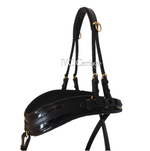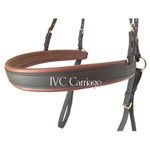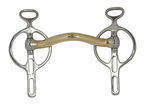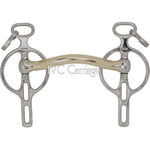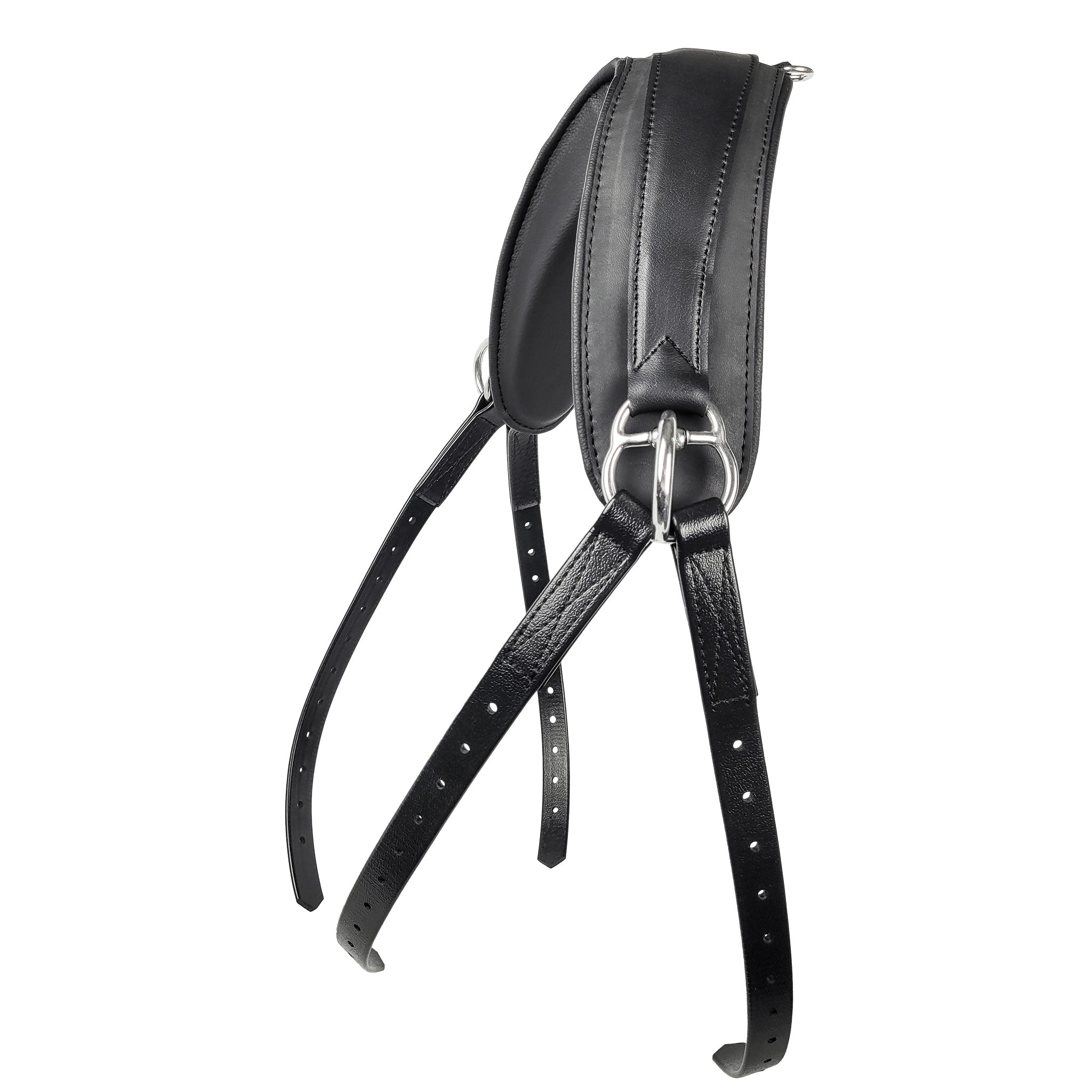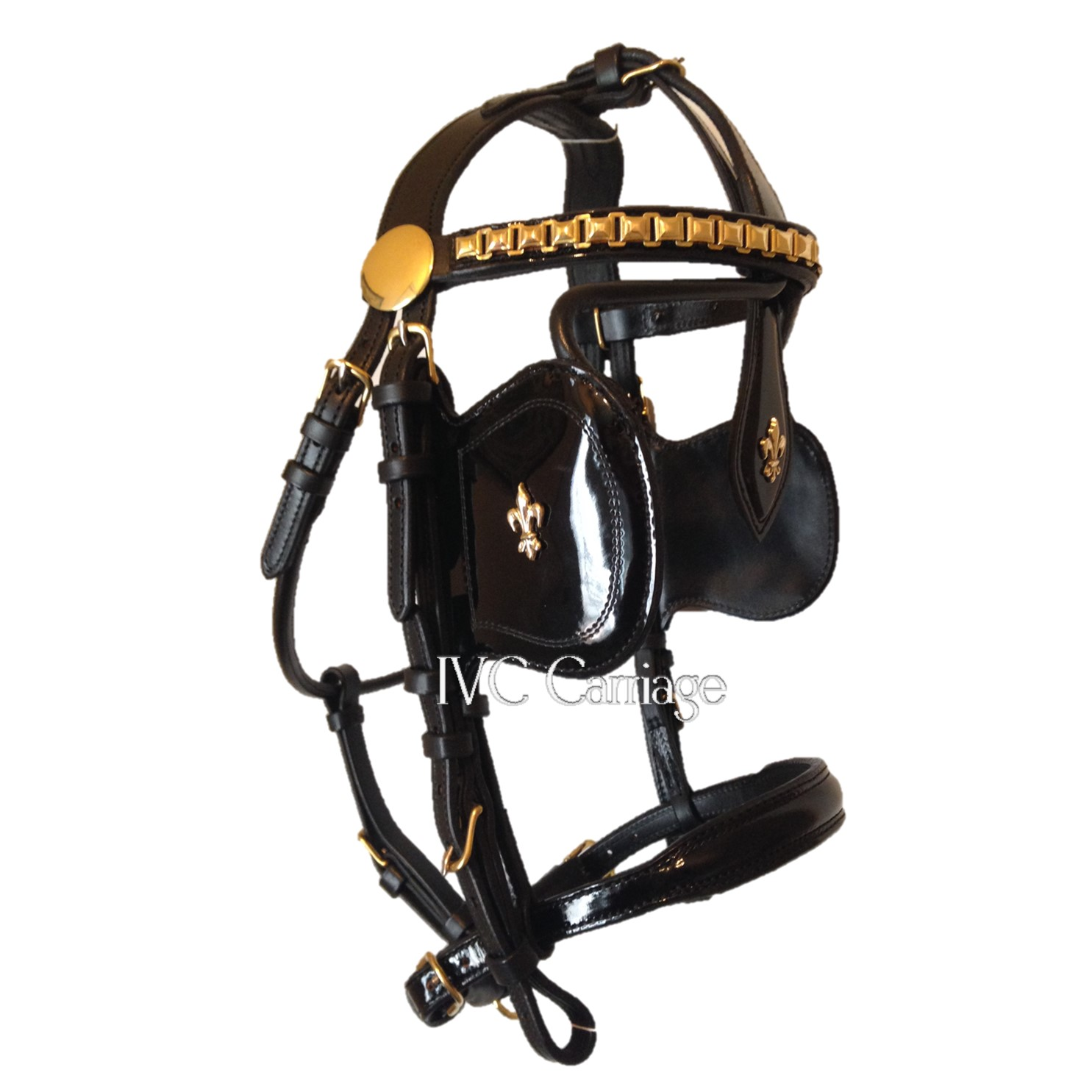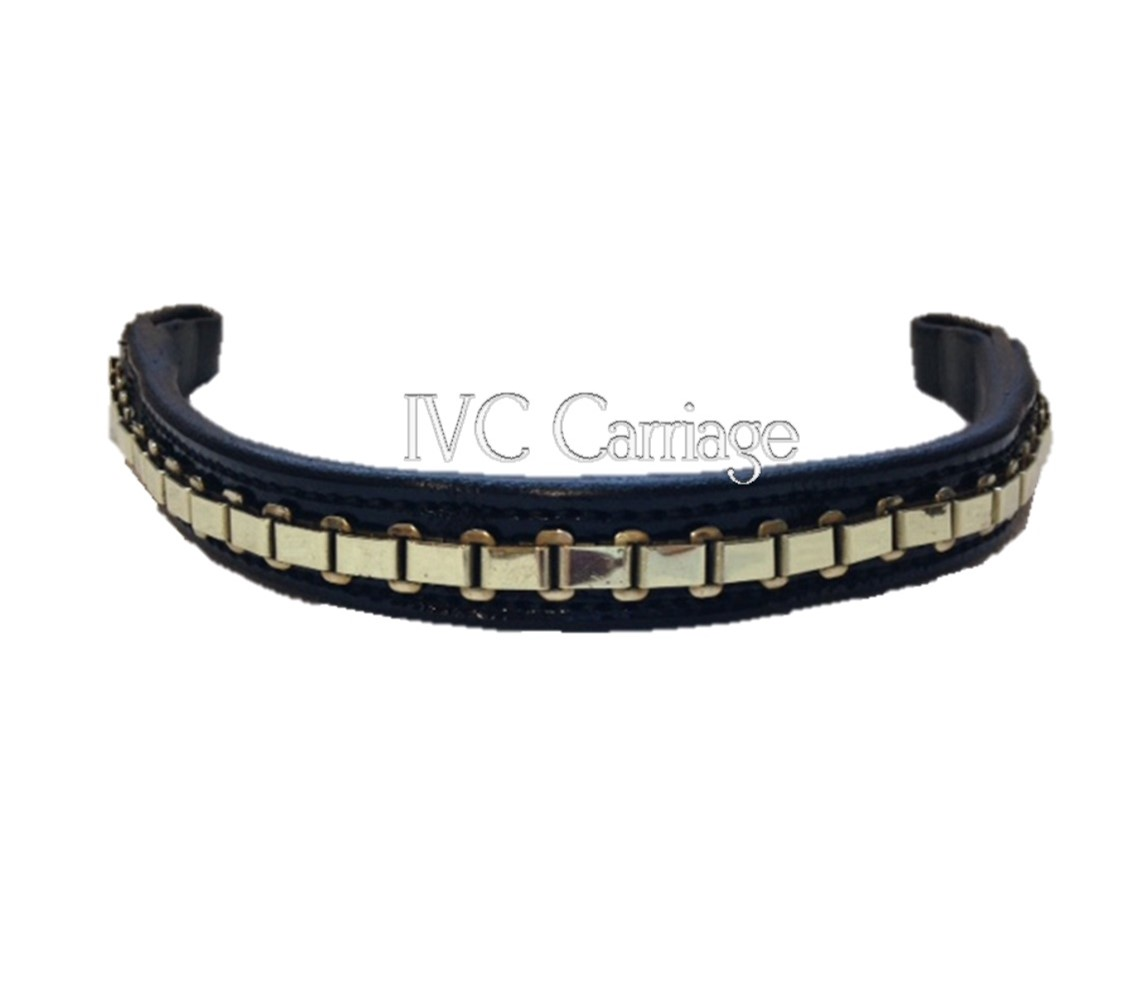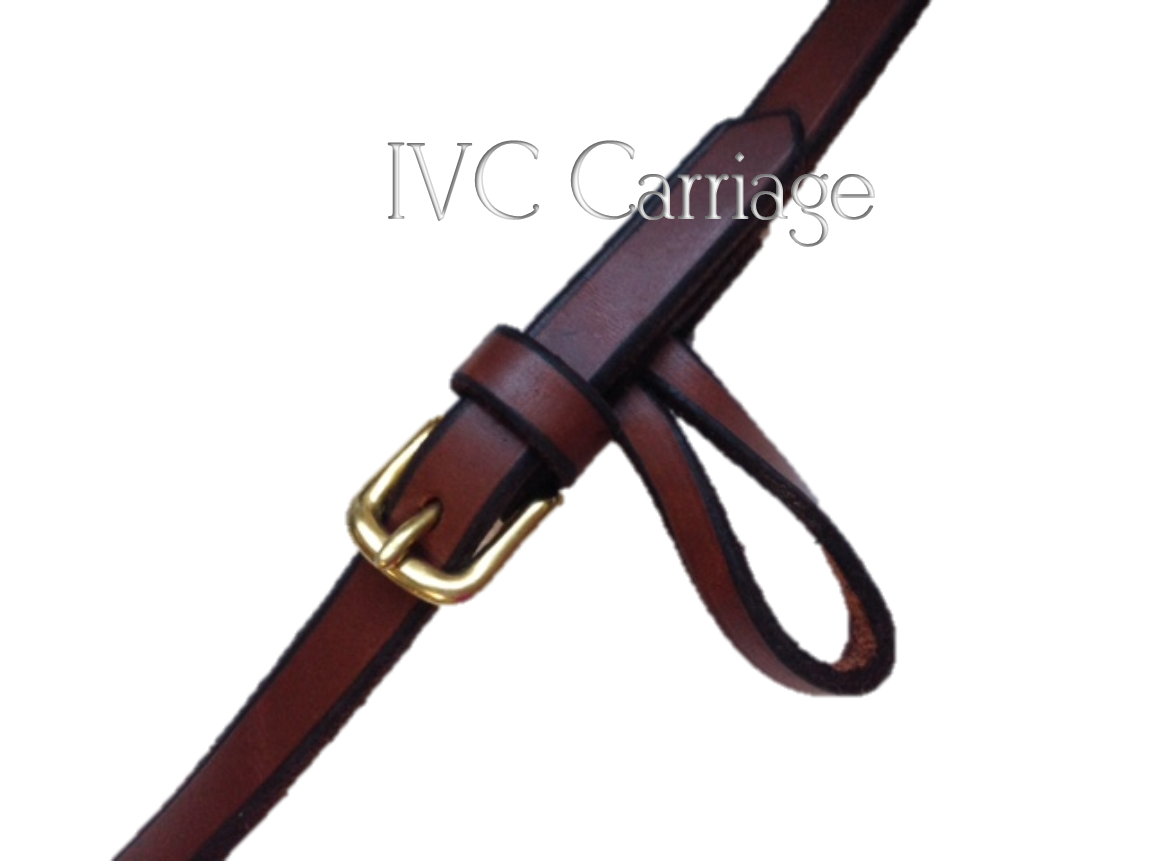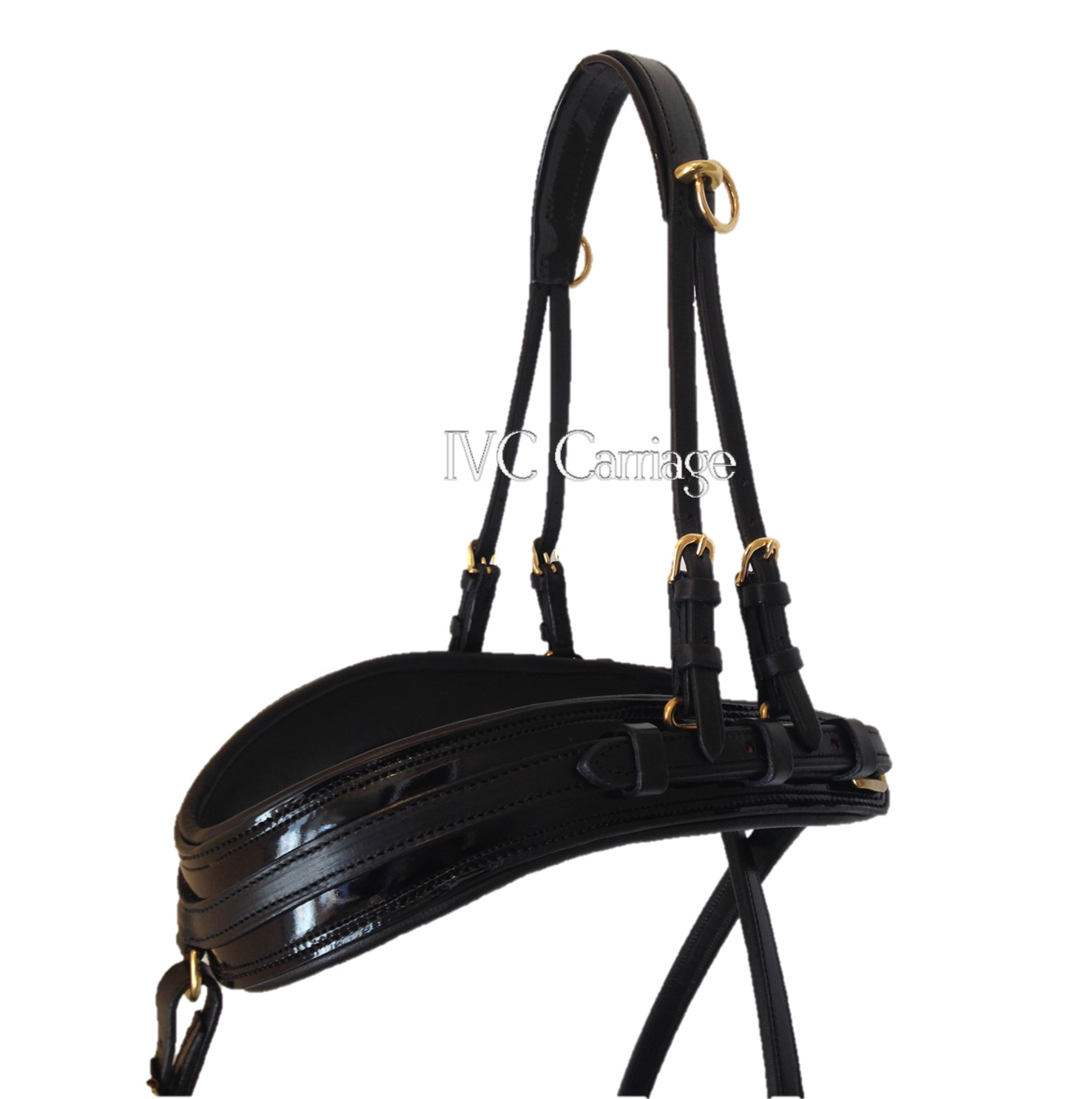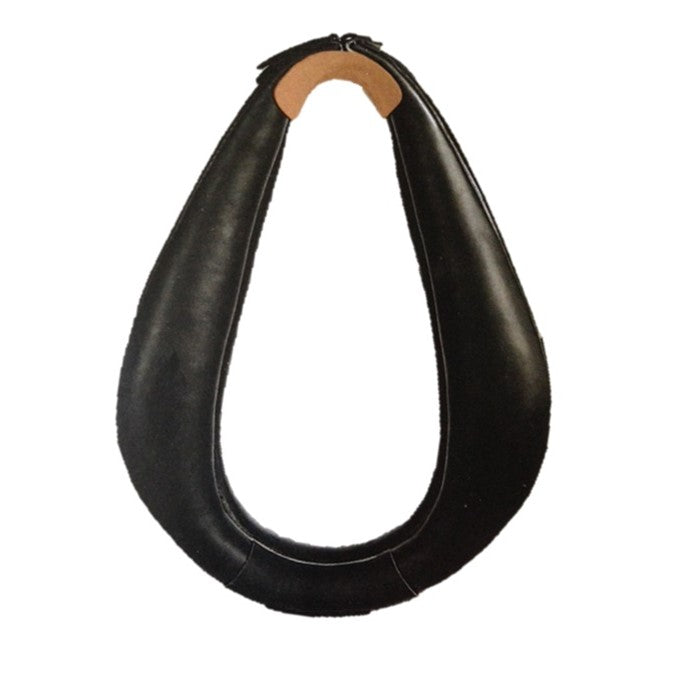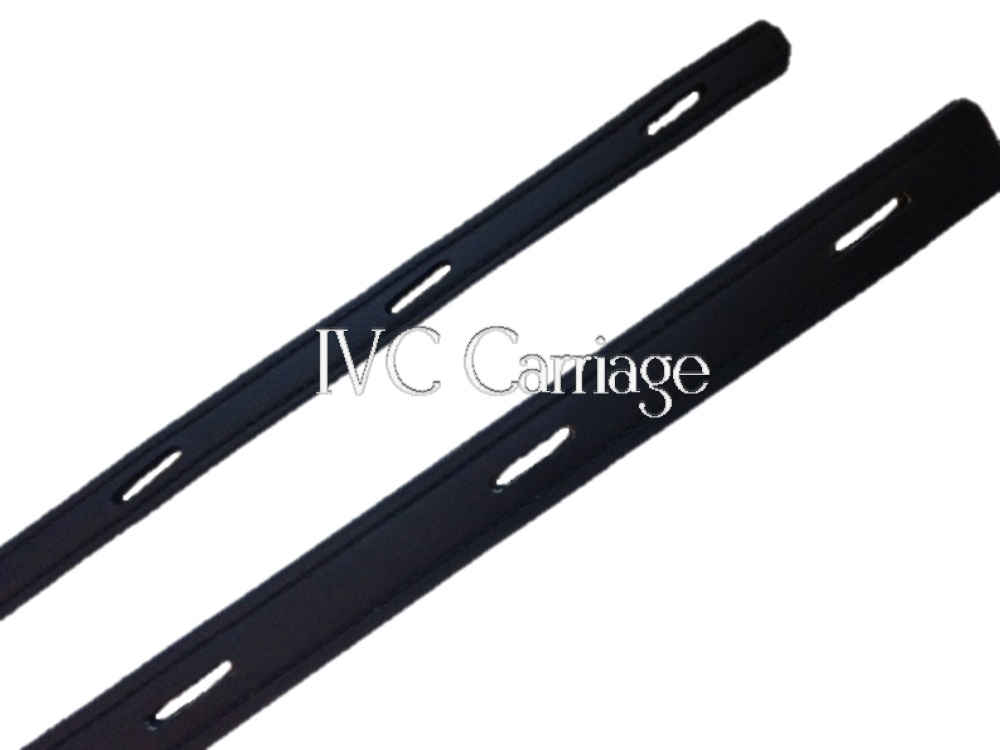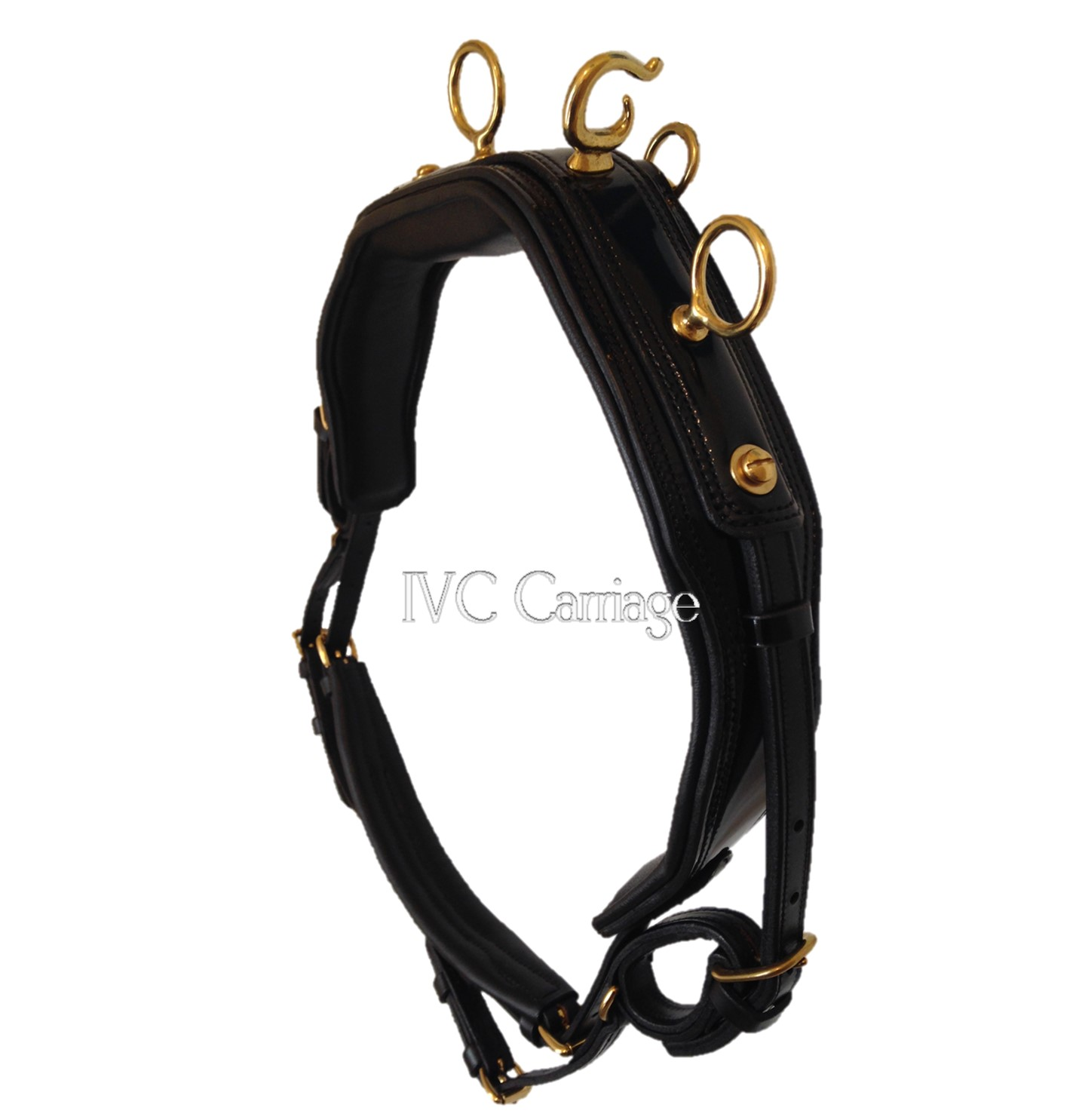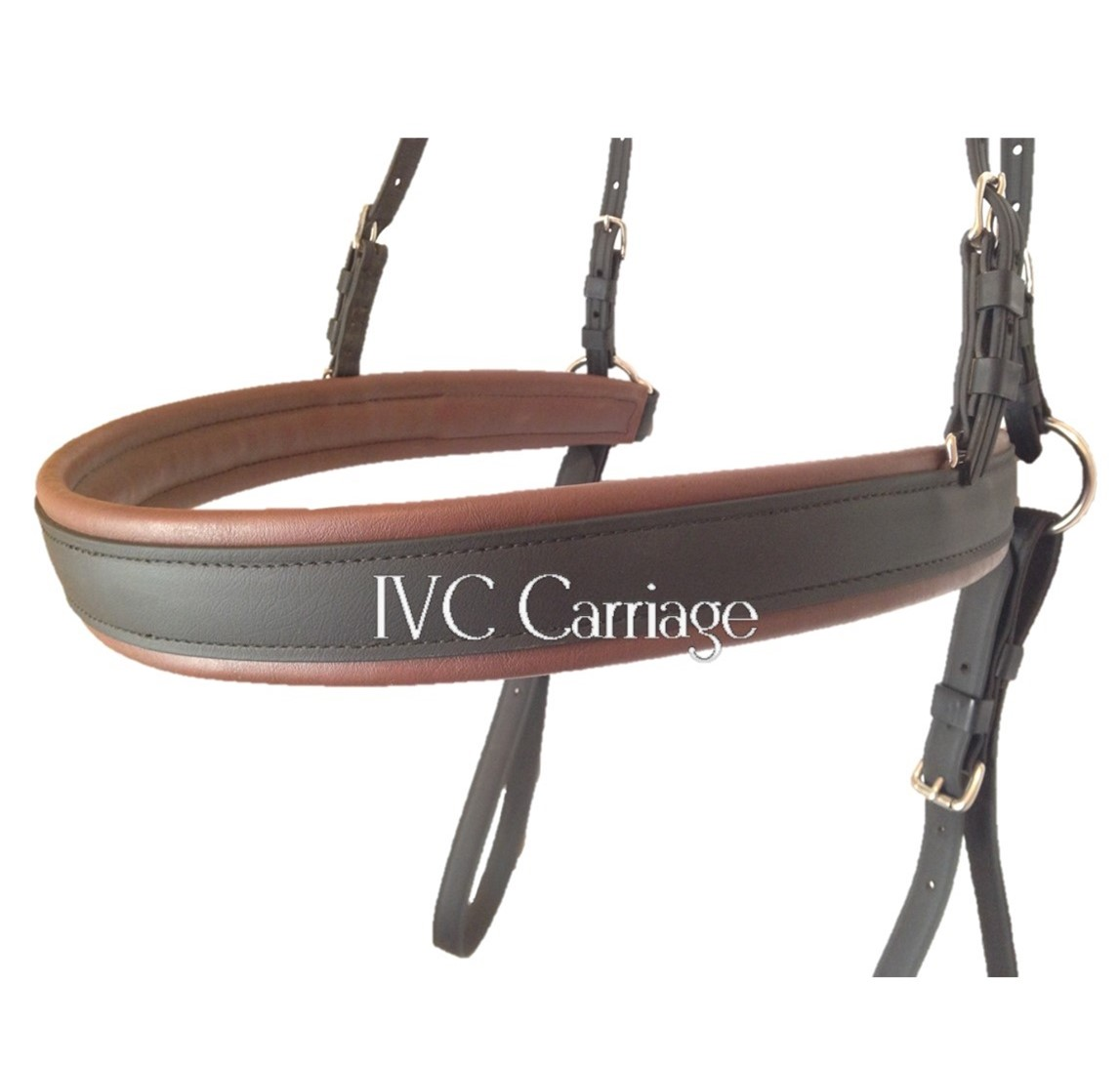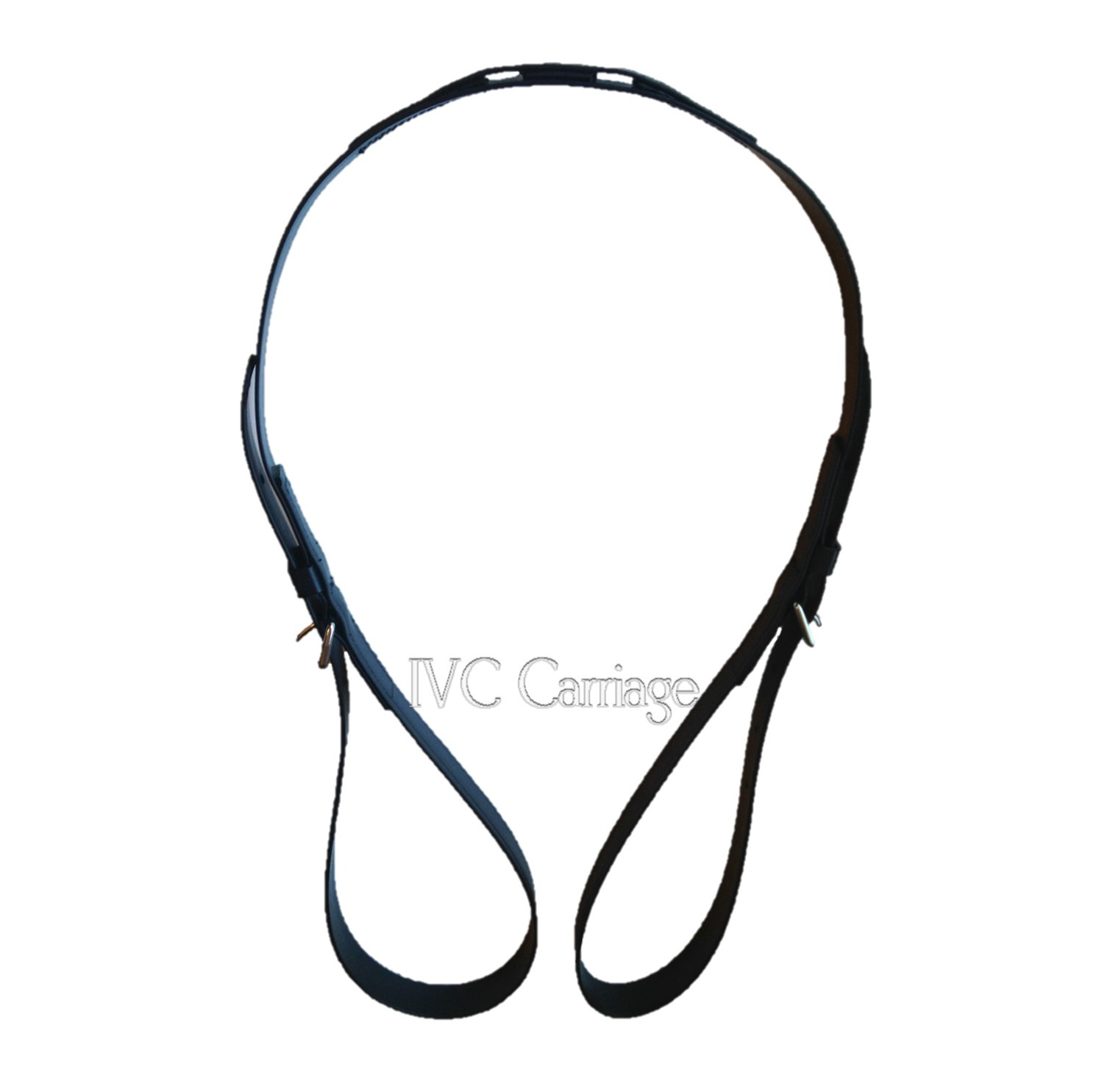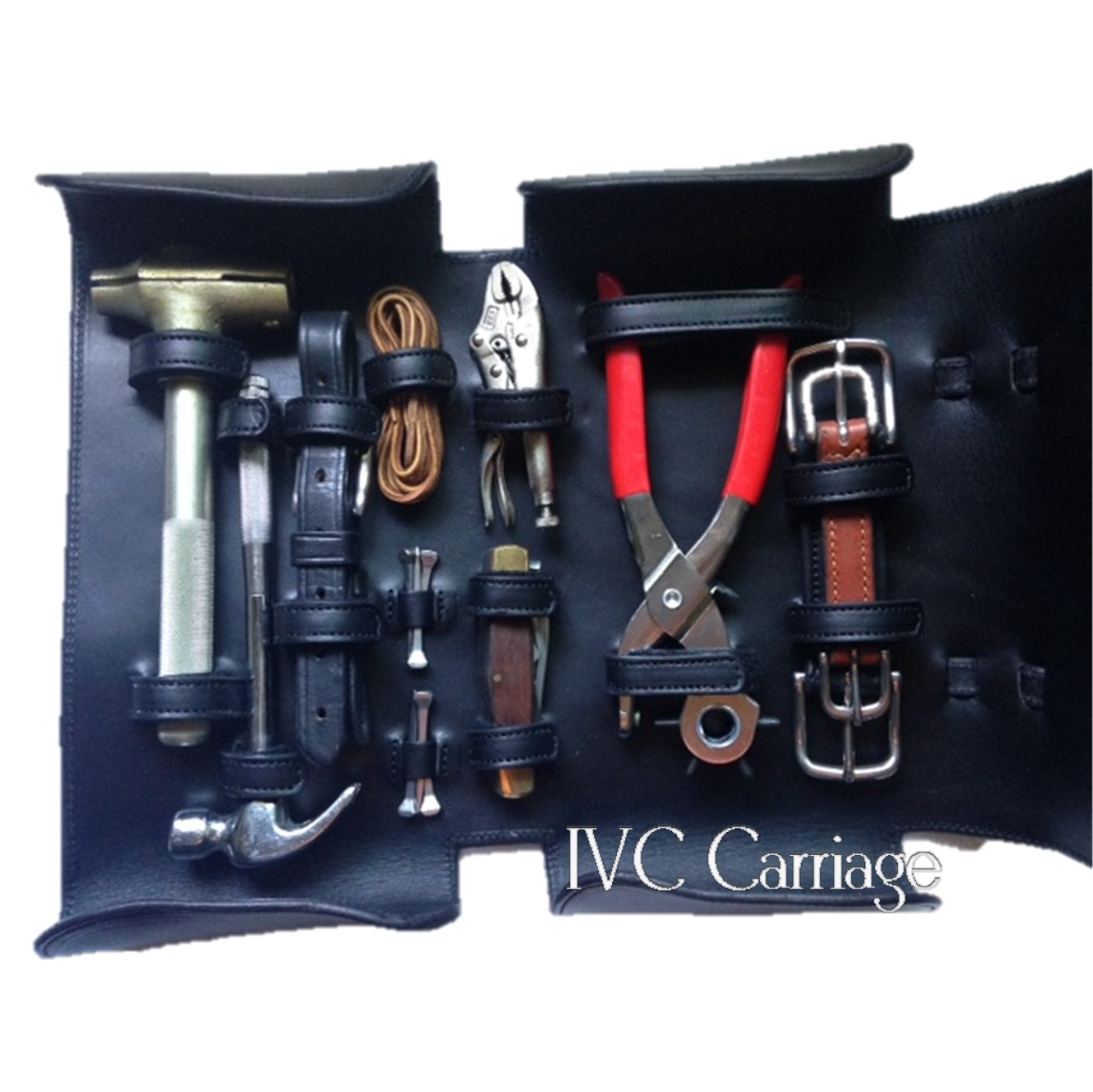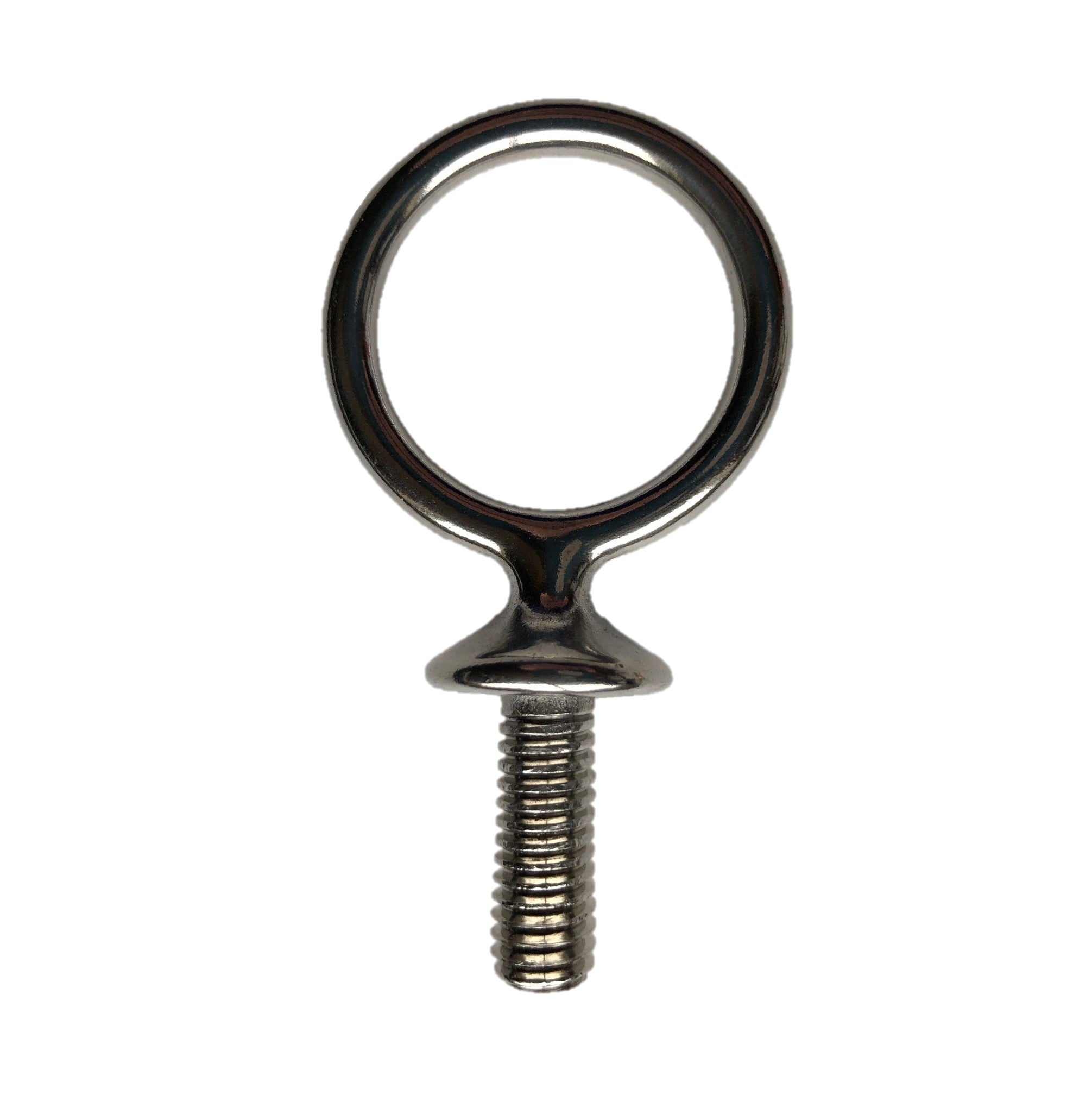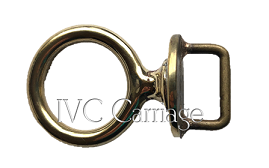Menu
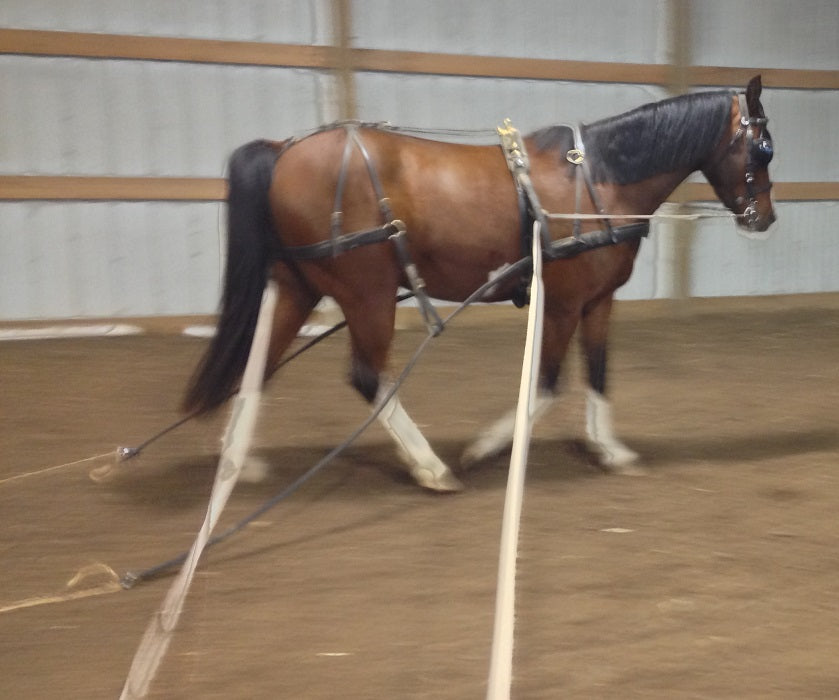
Long Lining or Ground Driving?
When a good trainer starts a horse, they obviously need to put in some time with the horse on the ground before it is put to a vehicle. A lot of new drivers working with green horses are under the impression that a major step in training the driving horse is ground driving. For my purposes in differentiation, I use the term “ground driving” to refer to walking behind the horse like you were in a vehicle, but without the vehicle attached. Our family doesn’t tend to do much “ground driving”. We do more what I refer to as “long lining” which is basically staying in the center of the arena while the horse goes around. The purpose of this article is more to introduce the learner to the concept of long lining verses discussing how to do it. There are plenty of resources available on that.
So why do we tend to long line versus ground drive? We are able to maintain better contact on the horse, therefore giving him a more typical feel of the mouth to transition to the contact he will feel when put to a vehicle. We also have better control of the back end of the horse through long lining when we put the lines through the tugs on the driving saddle (or lower rings of a surcingle if you have one). If the horse migrates into the center, the outside rein is there to help him stay out farther on the circle. The muscular structure of the inside hind leg is developed in the circle, which is the start of the horse’s proper bending through a turn. From the center of the circle, we can also observe the horse’s reactions and development more easily than from behind the horse.
When you ground drive behind the horse, you tend not to be able to maintain the same exact speed as the horse and therefore the contact on the lines “ebbs and flows”. It is virtually impossible to maintain steady, even contact on the bit when ground driving behind the horse, and a lot of people will have no contact at all! Being directly behind the horse also is not necessarily a safe place to be if the horse bucks or kicks out. If the horse decides to bolt forward, it is quite a bit more difficult to bring him back because you have nothing on which to brace and more than likely will get thrown forward and can be forced (either by choice or simply physics) to let go of the lines. Once the horse learns he can “escape” forward by bolting away from you, it is tremendously more difficult to break that habit and he learns to become a “runaway”. If the horse decides to bolt forward in the long lining circle, you can shorten up on the inside line to force him into a smaller circle, therefore decreasing his forward momentum and slowing his movement until you can get him more under control. The circle becomes the “safe, familiar place”.
When we long line, it’s not all just circles. We still do some steering of the horse in the process of long lining by setting up some cones or other obstacles in the arena through which we guide the horse. We will set up “deviations” of cones in a zig zag pattern, or some parallel poles on the ground through which he learns to go through without bumping. We switch direction by having the horse turn away from us. Regardless of where we place the horse, our body is only ever very briefly directly behind the horse. We are off to the inside of the turn most of the time. We can help the horse move out towards bit contact by moving quickly along with him as he trots along a side wall. The horse also learns to be rated in his speed by performing a slow trot in a smaller circle and a strong trot in a larger one. I’m not going to lie; I REALLY don’t want to have to run behind my horse when he’s in a strong trot. That’s too much like work for me!
When we start putting the horse to the drag or shaft trainers, we don’t have to negotiate those items while long lining the horse from the center of the circle. If we would ground drive while the horse is put to the drag, we have to watch where we are stepping so as not to get ourselves tangled in the drag! Again, we can maintain a more even, correct contact with the horse’s mouth through long lining while the horse is learning to pull.
Ground driving can have some benefits, like teaching a young horse to move forward without someone at his head leading him. He has to learn to be the “leader” (in physical location, not in mental capacity). It is also a good step for young horses that are still growing, therefore avoiding extra strain on fragile joints that circle work might produce. However, if they are that young, they probably shouldn’t be bitted anyway to be ground driven. More work can be done with desensitization and ground manners when the horse is too young to be worked heavily in a circle.
There are a few good resources to help you learn more about long lining. On the Box Seat is a good one.
Do yourself a favor. Get out from behind your horse and let the horse go around you while long lining. You will find that to be a much safer and more effective training method than ground driving!
- Choosing a selection results in a full page refresh.

